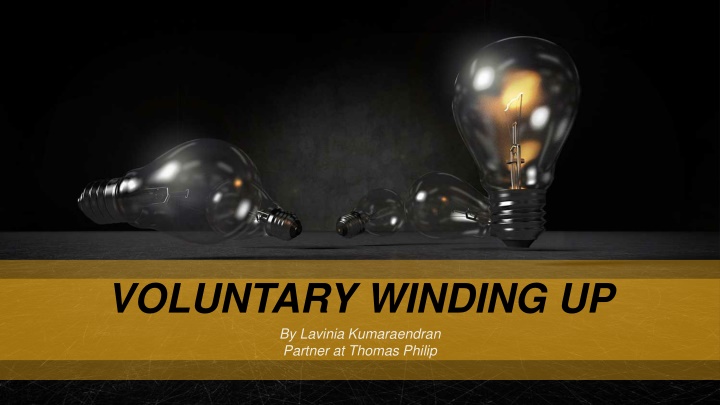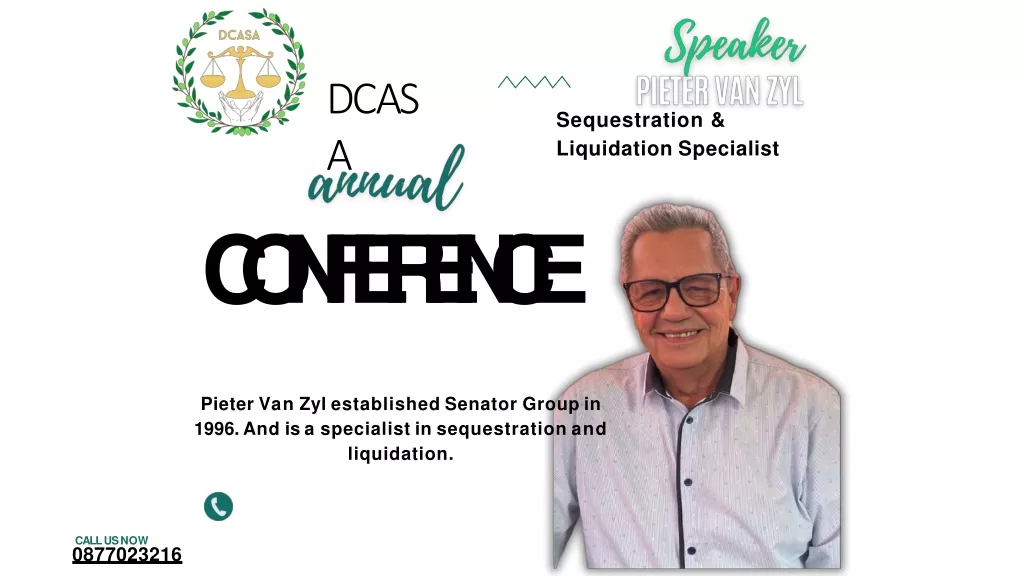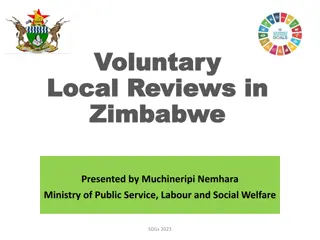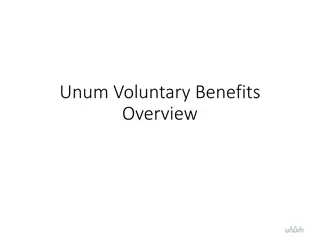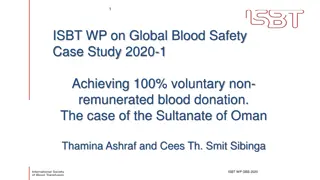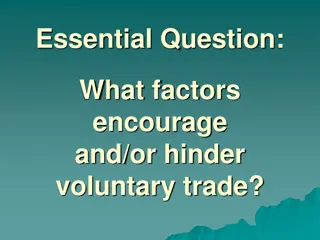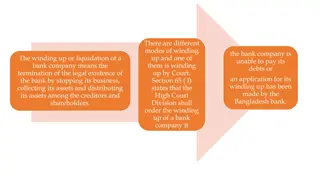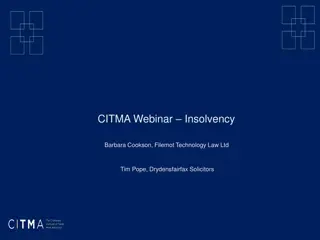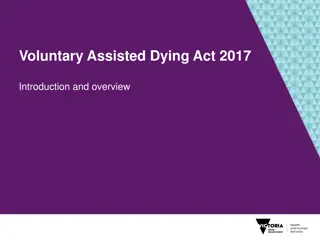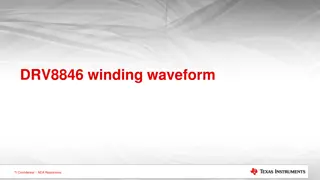VOLUNTARY WINDING UP
Exploring the distinctions between voluntary winding-up and compulsory winding-up in company law, focusing on the procedures involved in members' voluntary winding-up, declaration of solvency, and potential criminal sanctions for insolvent companies. The content delves into key aspects such as the admission of insolvency, shareholder decisions, court involvement, and procedural requirements for winding up a company.
Download Presentation

Please find below an Image/Link to download the presentation.
The content on the website is provided AS IS for your information and personal use only. It may not be sold, licensed, or shared on other websites without obtaining consent from the author.If you encounter any issues during the download, it is possible that the publisher has removed the file from their server.
You are allowed to download the files provided on this website for personal or commercial use, subject to the condition that they are used lawfully. All files are the property of their respective owners.
The content on the website is provided AS IS for your information and personal use only. It may not be sold, licensed, or shared on other websites without obtaining consent from the author.
E N D
Presentation Transcript
VOLUNTARY WINDING UP By Lavinia Kumaraendran Partner at Thomas Philip
Creditors Voluntary Winding - Up 01 A Creditor s Voluntary Winding-Up is a voluntary process, but is inadvertently an admission on part of the company directors that the business is insolvent and no longer viable. Member s Voluntary Winding-Up 02 Types of Voluntary Winding-Up As opposed to a CVW, companies opting for an Member s Voluntary Winding-Up must be solvent and able to meet its liabilities. This type of winding-up is usually opted when members of the company have decided to close the company in a tax- efficient manner. In larger companies, this may mean a discontinuation of certain aspects of the operations to generate cash.
COMPULSORY WINDING-UP In a compulsory winding-up, the court can wind up a company on several grounds under the Companies Act 2016. The most common ground is when a company is unable to pay its debts, and creditor(s) of the company have initiated legal action in pursuit of the money owed. Any disposition of property after the commencement of a winding-up suit is void, unless ordered otherwise by the court
PROCEDURE MEMBER S VOLUNTARY WINDING-UP Members of the company to pass a Written Declaration of Solvency to be resolution for the winding-up of the prepared and executed at a Board of company and the appointment of a Directors meeting. Declaration of Solvency liquidator. to be lodged with the Companies Commission of Malaysia Members of the company to appoint a liquidator. The company ceases all operations save and except for functions necessary for the winding-up process. Liquidator takes over all affairs of the company and proceed with winding-up.
A Declaration of Solvency What is it? It is defined in Section 443 of the Act. It is essentially a declaration by the directors of the company that after having made an inquiry into the affairs of the company, the directors have formed the opinion that the company will be able to pay its debts in full within 12 months from the commencement of the winding-up. Due to the strict wording of the Act (s.443(1) and 443(4)), It is mandatory to hold a meeting of directors in order to make this declaration of solvency. The same applies even in the case of a single director. The Declaration of Solvency must be attached with the company s Statement of Affairs. The Statement of Affairs should contain the assets of the company (including how much is to be realized from the same), the liabilities of the company and the estimated expenses of winding-up. After the Declaration of Solvency is made, it must be lodged with the Registrar of Companies before notices are sent out to the members.
CRIMINAL SANCTIONS Criminal sanctions are imposed to ensure that the company is indeed solvent when its directors embark on the members voluntary winding-up. Upon Conviction, the director may be liable to imprisonment for a term not exceeding 5 years or a fine not exceeding RM 3 million or both. If the offence continues, a further fine of RM500 a day.
PROCEDURE CREDITOR S VOLUNTARY WINDING-UP Members of the company to propose Give written notice by post to all creditors resolution for voluntary winding up. for a Creditors Meeting. Notice to be given at least seven (7) clear days before date of commencement of the meeting Winding-up notice to be advertised in a widely circulated newspaper in Malaysia in both the national language and in English. Creditors Meeting to convene at a time and place agreed upon by majority attendees and to decide on: Liquidator takes over all affairs of the a) Appointment of Liquidator; and company and proceed with winding-up. b) Appointment of Committee of Inspection (if necessary)
PROCEDURE CREDITOR S VOLUNTARY WINDING-UP A copy of the resolution for winding-up is to be lodged with the Companies Commission of Malaysia within seven (7) A copy of the resolution for winding-up days from the date the resolution was is to be posted in a widely circulated passed. newspaper in Malaysia in both the national language and in English ten (10) days from the date the resolution was Liquidator takes over all affairs of the passed company and proceed with winding-up.
Liquidator & COI The COI represents the interests of the The liquidator may, or if requested by any Creditors during the on-going winding-up creditor or contributory shall, summon and can act as a check and balance to the separate meetings of the creditors and powers of the liquidator and to protect the contributors for the purpose of rights of the creditors. determining whether or not the creditors or contributories require the appointment of a committee of inspection. Liquidator shall be remunerated as Upon the appointment of the Liquidator all prescribed in the rules and a member, powers of the directors shall cease. creditor or the liquidator can apply to Court to review the remuneration.
IMPACT ON LEGAL PROCEEDINGS Similar to a compulsory winding-up, the commencement of a creditor s voluntary winding-up would stay legal proceedings against the Company. As such, no action or proceeding shall be proceeded with or commenced against the company except by leave of the court and subject to the terms as the court imposes.
QB Khidmat Teguh Sdn Bhd v Pembinaan Legenda Unggul Sdn Bhd & Anor [2017] 8 MLJ 376 01 In this case, Justice Nazlan held that in the event a director is incapable of signing a Declaration of Solvency pursuant to S.433 of the Act then the company ought to proceed with a creditors winding up instead of a members one. Ganda Setia Cemerlang Sdn Bhd & Anor v Maika Holdings Bhd [2017] MLJU 1596 02 CASE STUDY Here the Court of Appeal and Justice Mary Lim held in her Ladyship s decision that leave of Court is required by a party who is seeking for the commencement of a fresh action or to proceed with any pending action. There are no distinctions applicable in this aspect between a voluntary winding-up and a compulsory winding-up.
Thank You! Lavinia Kumaraendran Partner Corporate & Commercial Litigation Team lkk@thomasphilip.com.my www.thomasphilip.com.my
